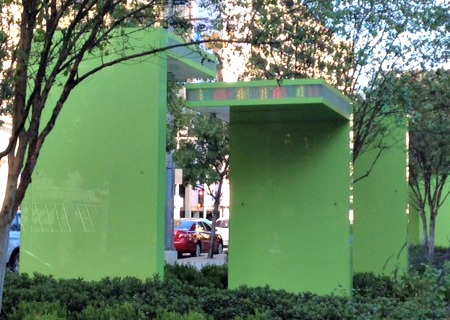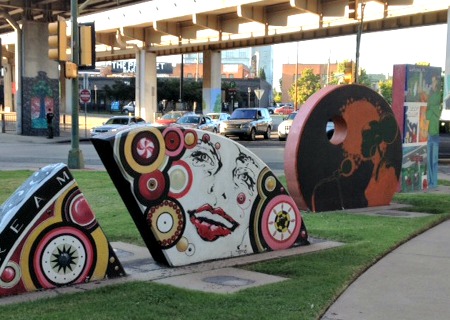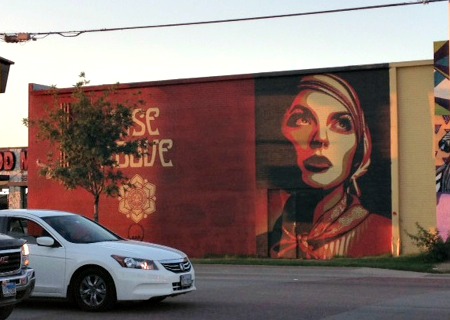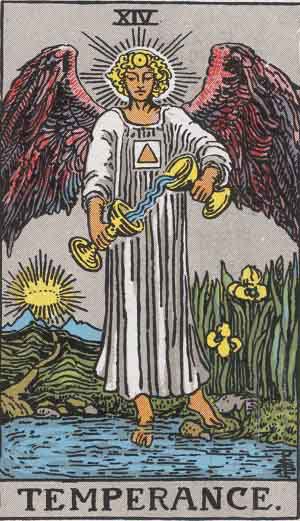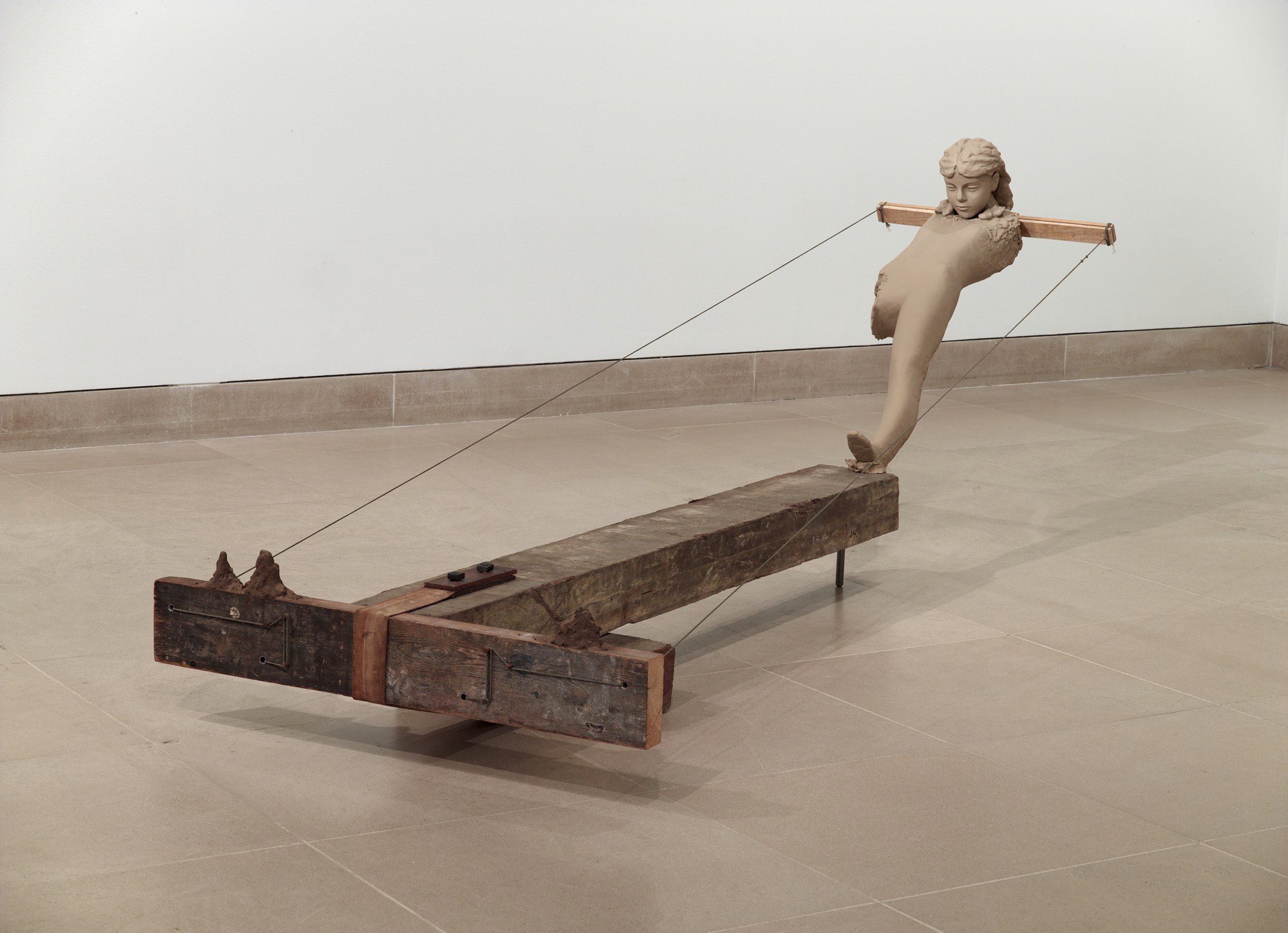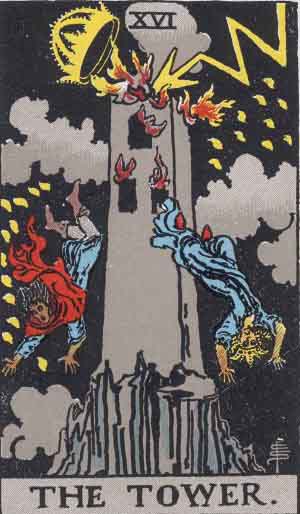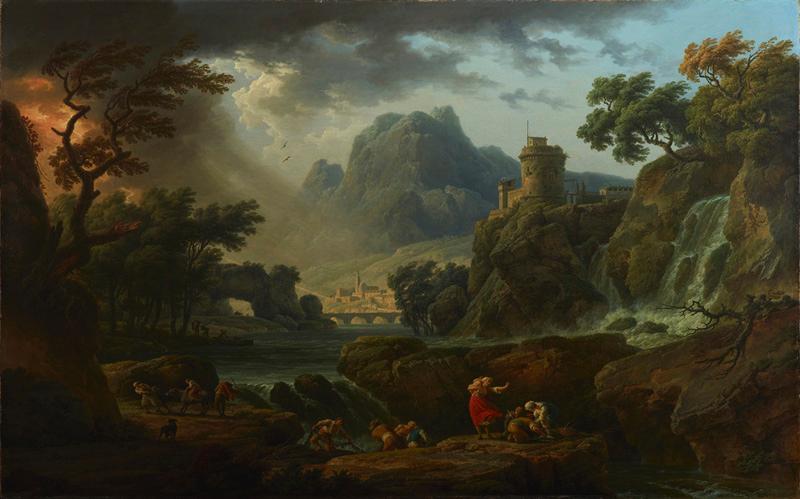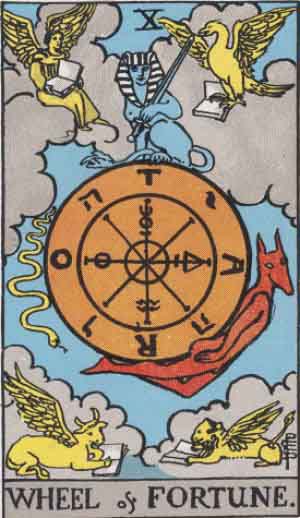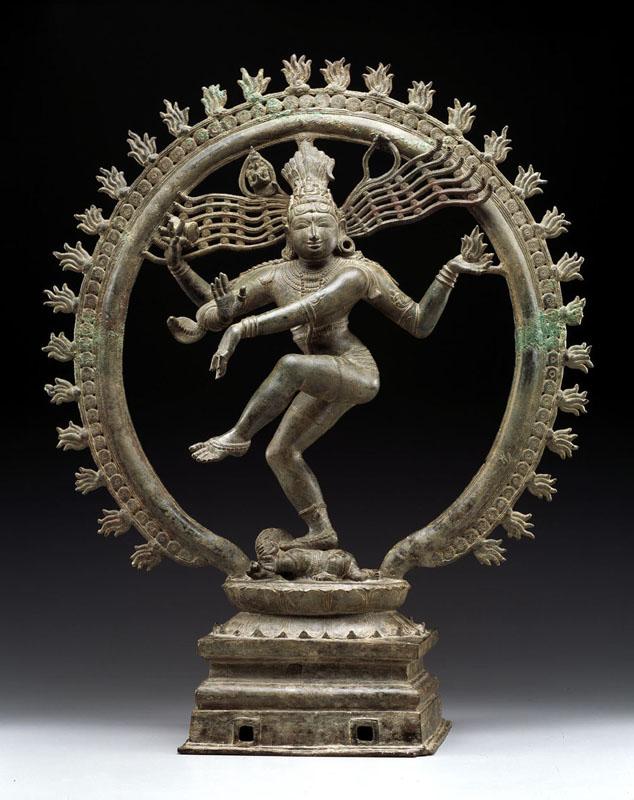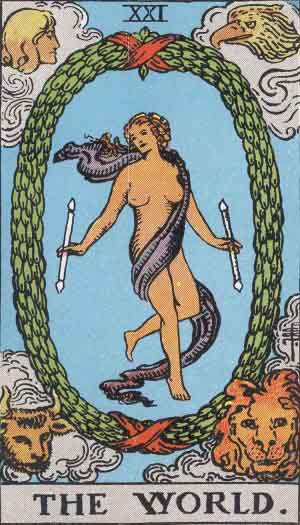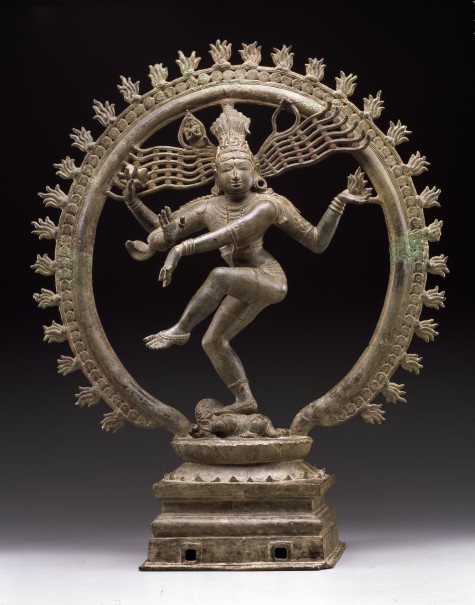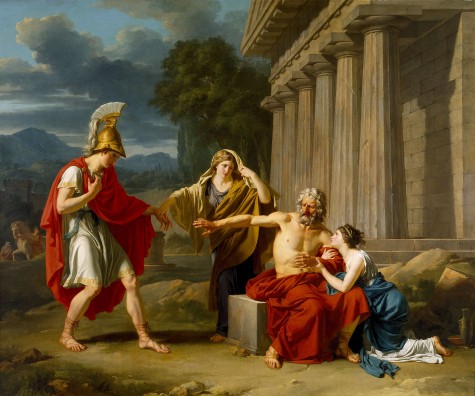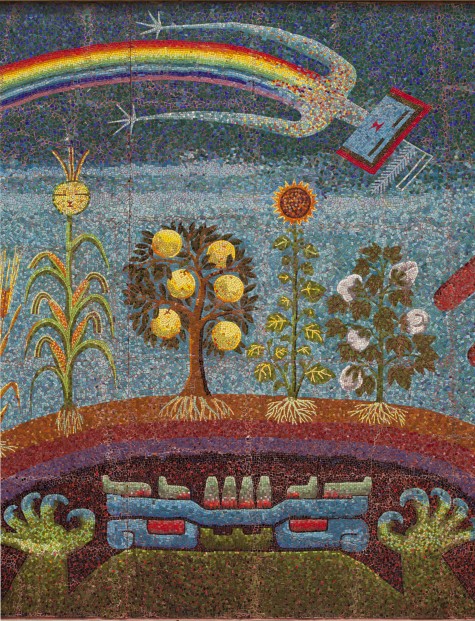I have always been drawn to public works of art. Not only is public art accessible to all, but it also adds color, encourages discussion and reflection, and creates a unique voice for a city.
Being new to Dallas, I have enjoyed exploring the city and discovering its public art along the way. Not only do we have several examples here in the Dallas Arts District, there will also be a plethora of new works to view beginning this weekend! It would be impossible to include every example in a single blog post, but here are a few of my favorites so far:
Created by Leni Schwendinger in 2009, SpectraScape is an interactive work of art located in Main Street Garden. Spectrascape is composed of bands of light that respond to human activity and movement. The artwork welcomes visitors into the park and encourages play and curiosity.
The Deep Ellum Art Park is filled with outdoor murals and sculptures that were created by dozens of local artists, including Frank Campagna, Tyson Summers, and Dan Colcer. The vibrant works of art add life to the gray, concrete pillars that make up Highway 75.
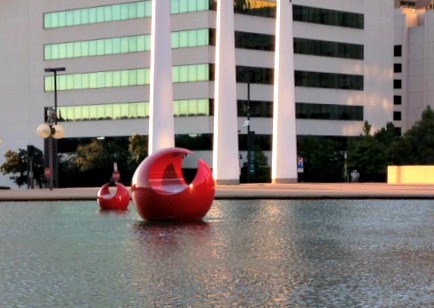
Marta Pan, Floating Sculpture, 1973, City of Dallas Office of Cultural Affairs Public Art Collection.
Found in the reflecting pool outside of City Hall, Floating Sculpture is composed of two bright red spheres that spin and glide along the surface of the water. Created by sculptor Marta Pan in 1973, Floating Sculpture was originally displayed in New York’s Central Park before finding its home here in Dallas.
In 2012, muralist Shepard Fairey was invited by the Dallas Contemporary to create several murals in the West Dallas area. I love the bold design of Fairey’s murals and admire his vision of creating works of art that convey messages of peace and harmony.

Miguel Covarrubias, Genesis, the Gift of Life, 1954, City of Dallas, Gift of Peter and Waldo Stewart and the Stewart Company, 1992
One of my favorite works of public art in Dallas is right here at the DMA! Every time I drive past the museum’s entrance, Genesis, the Gift of Life immediately catches my eye. The mosaic mural was created by artist Miguel Covarrubias and although it was originally commissioned for the city’s Stewart Building, it moved to its current location in 1990s.
Do you have a favorite work of public art here in Dallas? Go on your own art adventure and see what new works of public art you can find!
Amy Elms
McDermott Intern for Visitor Engagement
